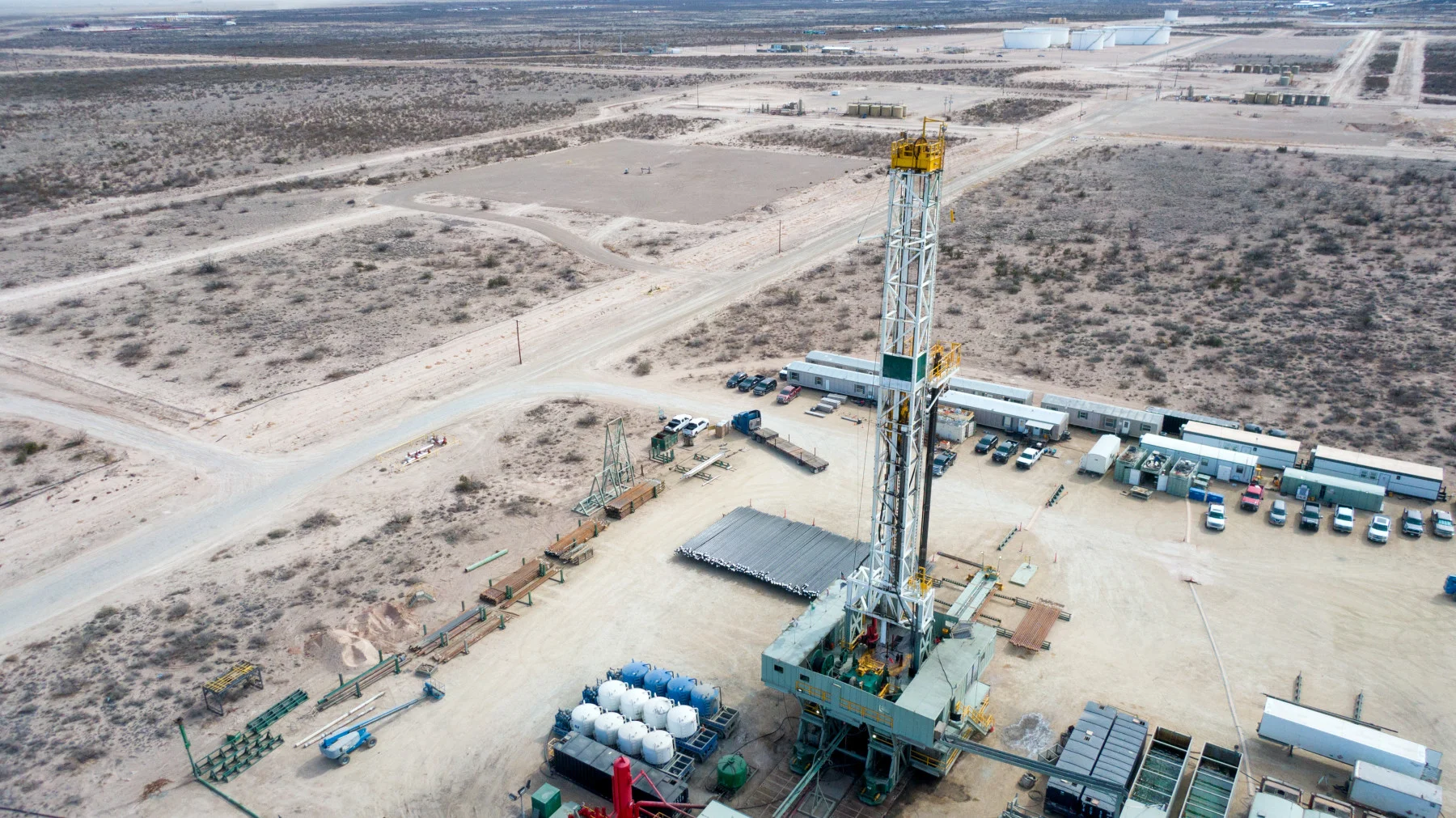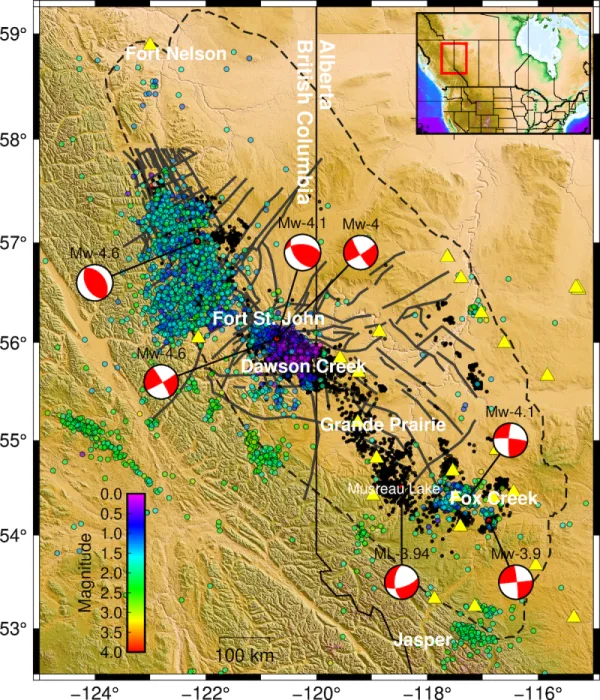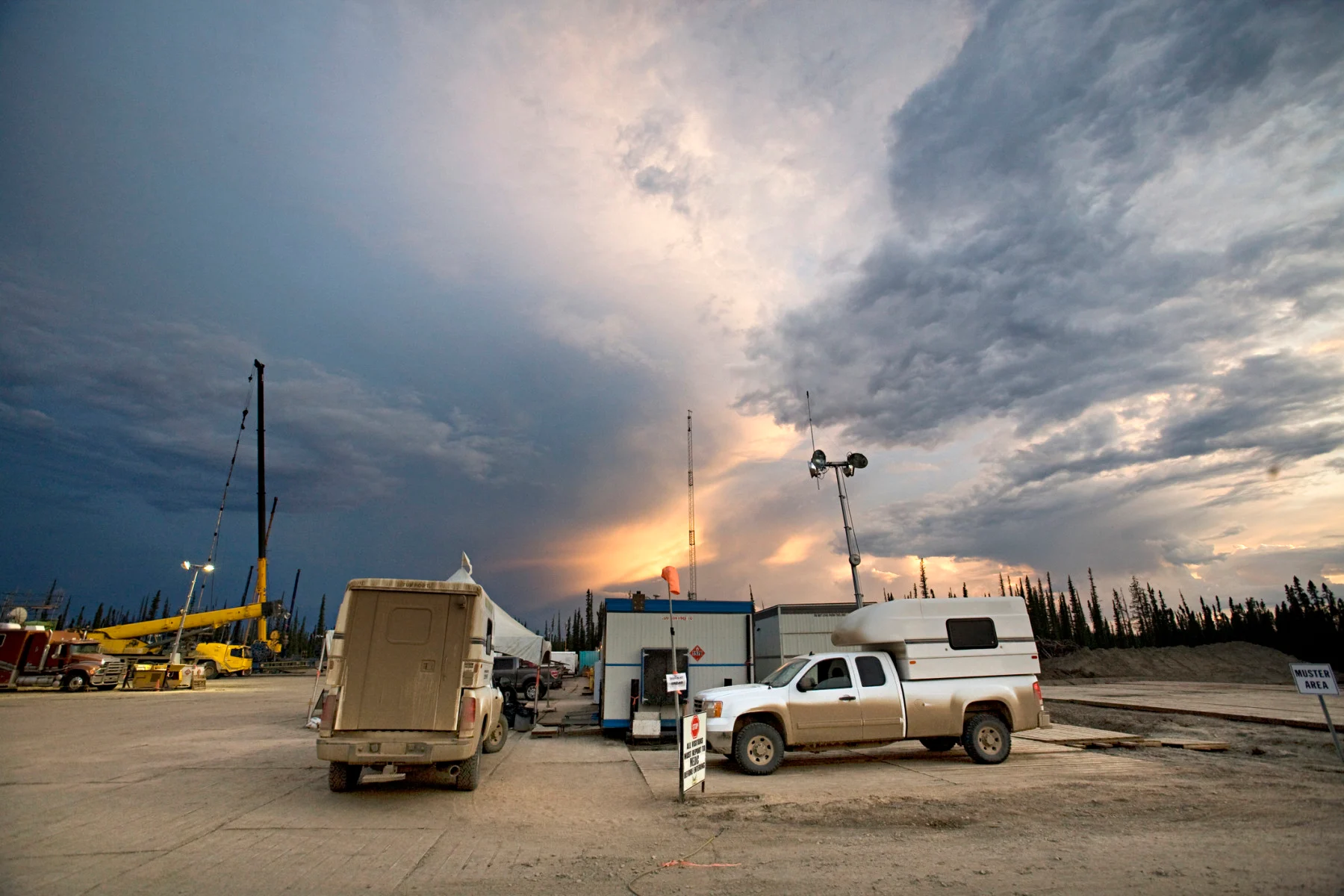
Fracking-induced earthquakes possible in these Canadian regions, study says
Fracking, geothermal energy extraction, and underground carbon storage all have the potential to induce seismic activity in B.C. and Alberta.
In March 2018, earthquakes caused numerous disruptions across Alberta — the power went out in parts of Sylvan Lake and homes in Red Deer shook as tremors travelled through the ground. This is a familiar phenomenon in parts of Western Canada and Alberta Energy Regulator later confirmed the seismic activity was caused by nearby hydraulic fracturing, or fracking.
Fracking is an oil and natural gas extraction process that can cause seismic activity and researchers from the University of Waterloo have now mapped the areas that are most likely to see fracking-induced earthquakes.
“We are trying to better understand and therefore better predict the phenomenon of induced seismicity during sub-surface engineering processes,” Maurice Dusseault, a professor of engineering geology at the University of Waterloo, said in a press release.

The map shows earthquakes related to hydraulic fracture. Major earthquakes are represented with red and white graphics. (Scientific Reports, 2022, 12:11551)
Essentially, the researchers have provided a deeper understanding of the risk the oil industry’s extraction practices — as well as some newer methods of putting carbon back into the ground — pose for the region. The area analyzed in their study, a 130,000 km2 section of western Alberta and northeastern British Columbia, is home to some of the world’s largest petroleum and natural gas reserves and is where most Canadian fracking activity occurs.
Areas in Western Canada have experienced some of the most intense fracking-induced earthquakes that have been reported worldwide. Recently, a 4.2 magnitude quake struck near Fort St. John, B.C. on November 30, 2018 and dozens reported light shaking. Based on the rapid change in underground pore pressure, the study concluded that fracking triggered this quake in Fort St. John.
The researchers revealed that this region will continue to face the risk of fracking-induced earthquakes in the coming years. “Injection-induced seismicity in this region has been increasing since 2010, as well as the rate of seismicity,” Ali Yaghoubi, study lead author and PhD candidate at the University of Waterloo, told The Weather Network.

Medic trucks at entrance of fracking site in northern British Columbia, Canada. (Aaron Black/ The Image Bank/ Getty Images)
Fracking involves injecting a pressurized mixture of water, sand, and chemicals far below the Earth’s surface to break up the rock formation. The sand helps the rock fractures stay open, which allows natural gas to escape and travel through a pipe up to the surface where it can be used for energy.
Fracking is related to seismic activity because injecting fluid deep into the ground can destabilize fractures in the Earth’s crust and affect other aspects of the rock formation, such as pore pressure and areas of accumulated stress. Eventually, the stress can become too high and force tectonic plates to quickly slide past each. Waves of energy then travel through the crust, resulting in an earthquake and shaking that can be felt on the surface.
Watch: Scientists look to Earth’s interior for future carbon capture research
In addition to seismicity concerns, fracking processes are energy-intensive and in some instances have contaminated underground water with dangerous toxins and cancer-causing chemicals. Numerous multi-million dollar settlements have been paid out in the U.S. as a result of fracking activity that led to contamination of private properties and sickness in the occupants.
Environmentalists say that drilling for natural gas, a source of methane and carbon dioxide, is not a viable option as a future energy resource in a warming world. However, some sustainable strategies also involve injecting fluids underground, which could impact the stability of the Earth’s crust, namely geothermal energy extraction and underground carbon storage.
“Any injection project like geothermal and carbon sequestration is the same process. When you inject fluid, you change the stress and the pore pressure. So, if there is a fault in this region, it might be reactivated,” said Yaghoubi.
Grande Prairie, Alta. is home to Alberta No.1 Geothermal Project, which generates 10 megawatts of energy annually while offsetting over 97,000 tonnes of carbon dioxide. The study found that even though over 700 multistage hydraulic fracturing operations have occurred in the region, this city is in an area that is “far less prone” to experiencing significant levels of induced seismicity.
Yaghoubi explained that the research team’s analysis confirmed that the seismic stations have not detected earthquake activity from Grand Prairie drilling, which bolsters the reliability of using this region’s rock formations for geothermal energy extraction.
The researchers conclude that the map and study findings can be used for planning future underground energy extraction projects and wastewater disposal, which is essential knowledge as sustainable initiatives look to expand carbon sequestration and geothermal energy in Canada.
Thumbnail image: Drone view of a fracking rig pad in the U.S. (Joey Ingelhart/ iStock /Getty Images Plus)











